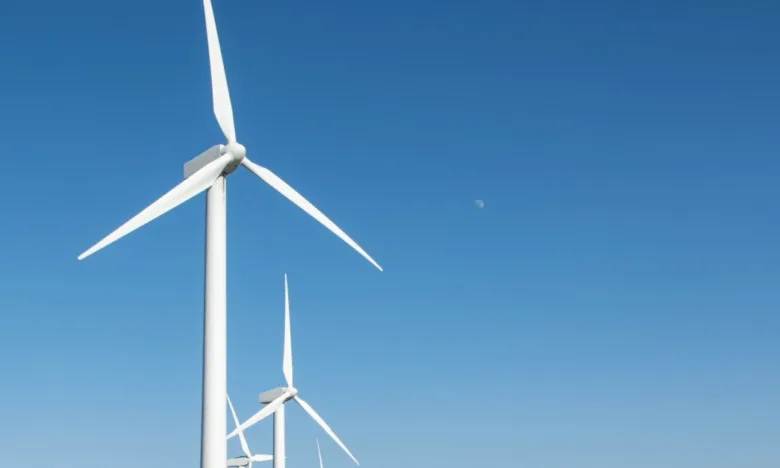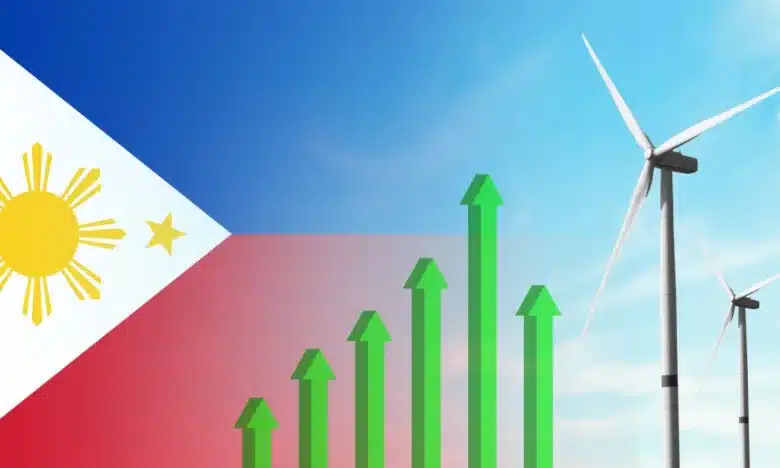
Seasonal Shifts Challenge Renewable Reliability
- June 9, 2025
Before the onset of El Niño in 2023, global advisory firm WTW cautioned that the weather phenomenon could trigger wind droughts and severe storms across the Asia Pacific. This would pose a major threat to the region’s renewable energy output, particularly wind and solar generation.
During El Niño events, the typical east-to-west trade winds weaken or even reverse, leading to reduced wind speeds across the equatorial Pacific. This phenomenon, often referred to as a “wind drought,” can diminish the efficiency of wind turbines and lower electricity output from wind farms.
El Niño also brings reduced rainfall and fewer clouds in some parts of the country, increasing solar irradiance, which measures the power of solar radiation (sunlight) per unit area (usually watts per square meter) received on a surface, such as solar panels. While this benefits solar power generation, it also poses serious challenges to energy security. In the Philippines, diminished rainfall leads to lower water levels in reservoirs, significantly reducing hydropower output.
At the same time, hotter temperatures drive up electricity demand, particularly due to the increased use of cooling systems. This combination of lower supply and higher demand places considerable strain on the power grid.
Meanwhile, La Niña has the opposite effect, often marked by above-average rainfall, increased cloud cover, and stronger winds in some areas. These conditions can be beneficial for hydropower, as enhanced water inflow replenishes reservoirs and boosts generation capacity.
For wind energy, La Niña may bring enhanced wind speeds in certain regions, providing favorable conditions for wind turbine efficiency. However, the downside lies in the higher frequency of tropical cyclones, which can damage wind infrastructure and cause operational delays or outages.
Solar energy, on the other hand, tends to experience negative effects during La Niña events. Persistent cloud cover and frequent rains reduce solar irradiance, limiting the output of photovoltaic systems.
(Also read: Calls for Accountability Over Palawan’s Power Issues)
Global real-world cases
Across different regions, observable impacts of La Niña and El Niño on renewable energy sources have highlighted challenges in power generation.
-
Hydropower strain in Ecuador
Ecuador endured its worst drought in 60 years, worsened by the 2023–2024 El Niño, triggering crippling power outages. Hydroelectric reservoirs ran dangerously low, forcing rolling blackouts up to 14 hours daily starting September 2024.
The crisis occurred in two waves in late 2023 and spring 2024, exposing Ecuador’s heavy reliance on hydropower. The drought, especially severe in the south, revealed the urgent need for a more resilient and diversified energy system.
-
Wind power decline in the US
In 2023, US wind power generation dipped for the first time in decades, despite adding 6.2 gigawatts (GW) of new capacity. While the total wind capacity hit a record 147.5 GW, output fell by 2.1% compared to the previous year. The average capacity factor—the measure of actual energy produced versus potential—dropped to its lowest in eight years, signaling a slowdown in growth for wind energy.
Experts link the decline largely to weaker-than-usual wind speeds during the first half of 2023, a period influenced by El Niño’s disruption of prevailing wind patterns. This natural climate phenomenon reduced the strength of trade winds, impacting turbine efficiency and underscoring how climate variability can affect renewable energy reliability even amid expanding infrastructure.
-
South Africa’s solar output decrease
During the 2020-2021 La Niña event, South Africa experienced prolonged overcast conditions, particularly in regions like Gauteng and the Eastern Cape. A 1.2 MW solar installation in the Eastern Cape, which had consistently performed 3% to 10% above target throughout 2020, saw its output drop to 8% below target by November.
On overcast days, energy production plummeted by up to 54% compared to sunny days. This significant reduction in solar energy yields impacted both energy savings for consumers and the return on investment for solar projects.
-
Hydroelectric shortfall in the Philippines
In 2024, the Department of Energy (DoE) projected that the dependable capacity of all hydroelectric plants would decrease by approximately 79% due to El Niño. Specifically, Luzon’s hydro capacity was expected to drop from 2,416 MW to 585 MW, while Mindanao’s capacity was projected to decrease by 115.5% to 1,031 MW.
In Nueva Ecija, the Pantabangan Hydroelectric Power Plant, with a capacity of 120 MW, faced an early shutdown in March 2024 due to rapidly declining water levels in the Pantabangan Reservoir.
(Also read: Why Coal Remains Essential for Energy Security)
Why renewables currently fall short
By 2040, the Philippines is projected to need 54,655 MW of electricity, an increase of over threefold from the 2020 demand level of 15,282 MW. This underscores the country’s rapidly growing energy requirements.
To ensure a stable supply, DoE acknowledged that renewable energy isn’t sufficient. “While renewable energy has made impressive strides in recent years, the country can’t rely on it entirely yet,” DoE Undersecretary Rowena Guevara disclosed.
She added that as of May 2025, over 1,400 renewable energy contracts have been awarded, totaling more than 160 GW in potential. Yet only 28 GW have been installed, highlighting the urgent need to turn commitments into functioning power projects.
For Energy Advocate Nic Satur Jr., solar and wind remain unreliable as the core of the Philippine energy grid. “They are intermittent sources that are dependent on weather conditions,” he wrote. “On cloudy days or calm days, their output drops significantly, especially during periods of peak demand.”
Meanwhile, Bienvenido S. Oplas, Jr., president of Minimal Government Thinkers, stated that due to wind and solar energy’s intermittent nature, they are not yet capable of replacing coal without risking widespread daily blackouts.
“The Philippines is growing fast economically. We need at least 7-8 TWh (terawatt-hours)/year addition in 2024-2026,” he said. “Otherwise we cannot grow (GDP) at 6% or more yearly as we will have frequent rotational blackouts as demand keeps rising and supply is not catching up.”
Coal still matters
According to Satur, the Philippines can draw valuable lessons from its neighbors’ energy strategies. Vietnam, for instance, has balanced its booming power needs by using coal and gas for baseload stability while scaling up renewables—making up 42% of its energy mix, with solar and wind contributing 13% in 2023.
Indonesia, facing similar growth pressures, has tapped its geothermal wealth to deliver steady, renewable baseload power. The Philippines, with its abundant geothermal resources, holds similar potential it can harness to strengthen its energy mix and improve grid reliability.
“We must encourage constructing more power plants, regardless of the specific technology to keep pace,” he stressed. “Whether it’s coal, natural gas, geothermal, biomass, or even nuclear.”
Energy transition isn’t about pulling the plug on coal overnight, said Undersecretary Guevara.
Instead, she stressed the shift to renewables must be deliberate and carefully phased. “Transition has to be calculated and calibrated,” she explained. “We do not want this to impact the economic growth of the country by suddenly turning off our coal-fired power plants.”
Additionally, Energy Regulatory Commission Chair Monalisa Dimalanta emphasized that the government remains committed to ensuring the energy transition doesn’t lead to unaffordable electricity rates for households and businesses. “If we ask consumers, it’s not the emissions target that they are concerned with. It’s not that we are not concerned about our global commitments on emissions, but our main job is to make sure that only reasonable rates are passed on to our consumers,” she said.
Columnist Den Somera wrote about the real cost of renewables, citing a 2022 study using the Levelized Full System Cost of Electricity (LFSCOE) metric. It revealed that storage and backup needs significantly increase the overall expense of solar and wind beyond their initial price tags.
“Even if coal is seen to be more expensive at $76/MWh compared to onshore wind at $40/MWh and solar PV at $36/MWh since coal has a much higher capacity factor and is less intermittent as a source, it has much less need for storage and backup power, rendering it cheaper at $78 to $90/MWh,” he explained.
For those raising concerns about fossil fuels’ environmental impact, Terry L. Ridon, public analyst and InfraWatch PH convenor, pointed out that developing countries like the Philippines aren’t held to the same strict climate commitments as industrialized nations.
He argued, “At our current stage of economic development and limited land areas for food production, the nation cannot yet dispense with baseload technologies such as coal, oil, and gas, without incurring significant energy costs detrimental to the public.”
Sources:
https://en.wikipedia.org/wiki/2023%E2%80%932024_Ecuador_electricity_crisis
https://electrek.co/2024/04/30/us-wind-generation-2023/
https://www.philstar.com/headlines/2024/03/25/2343044/doe-monitoring-power-situation-amid-el-nio
https://www.philstar.com/business/2024/06/21/2364296/philippines-coal-supply-enough-until-2030
https://nrgeneration.co.za/the-impact-of-rain-on-solar
https://businessmirror.com.ph/2023/12/15/despite-el-nino-no-red-yellow-warnings-doe
https://www.pna.gov.ph/articles/1221143



